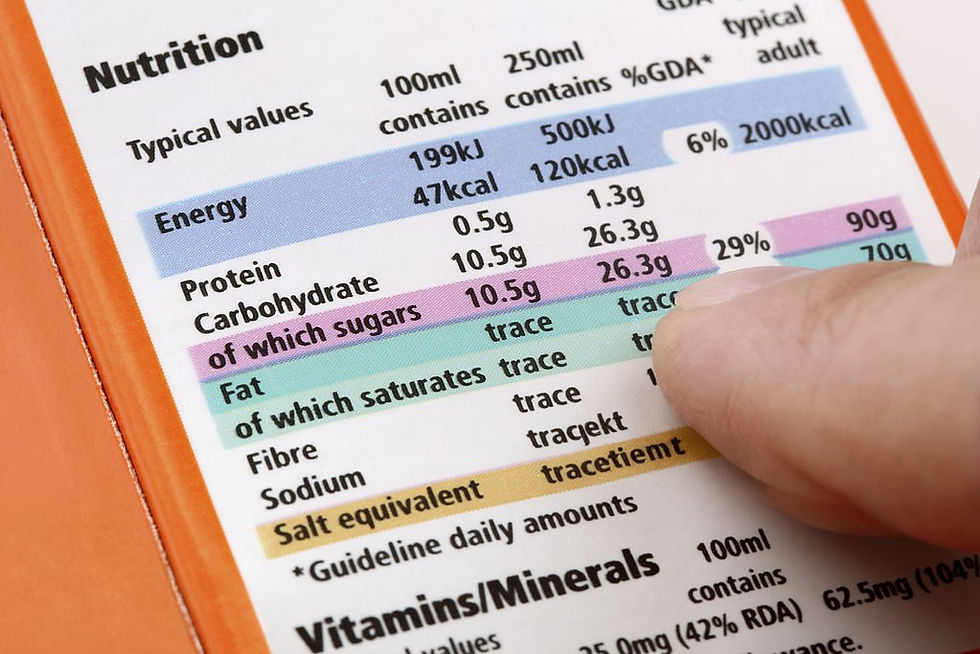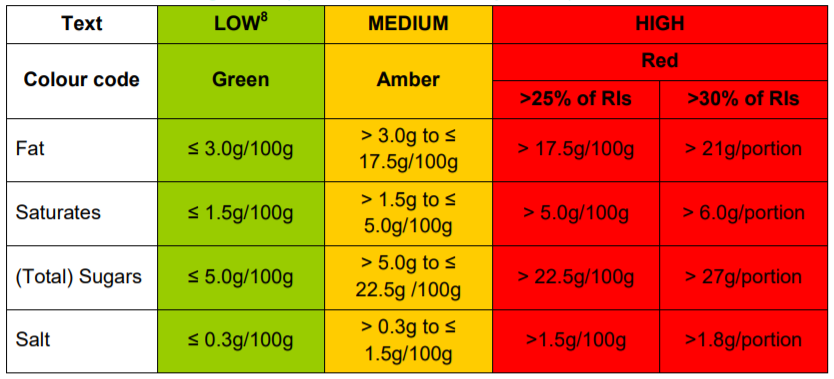How to Read a Food Label (Without the Headache)
- Komal Tanna
- Jun 20
- 3 min read
Updated: Jul 2

Decoding food labelling is something I talk about with all my clients. The problem is, when we’re shopping, we often only see the front of the packaging. If there’s something appealing like “low fat” or “high protein,” we naturally gravitate towards it.
Remember, the front of the pack is all marketing. The real truth is on the back.
Once you understand how to read food labels, it becomes a powerful skill that helps you make informed choices, especially when deciding which brand to choose.
In the UK, there are strict regulations that all manufacturers must follow when it comes to labelling. For claims like “low fat” or “high protein”, the product must meet a specific criteria. These laws are in place to protect us as consumers.
1. Ignore the front! Flip it over
As mentioned before the front is for marketing. The idea is to sell, remember manufacturers are businesses they’re always looking to make a profit.
Instead, turn the product around and focus on:
Ingredients list
Nutrition table
Portion size
How many of you have seen a low-fat product, only to then turn it around and find it's filled with a whole load of ingredients you don’t understand, different types of sweeteners, as well as emulsifiers and thickeners? I think we’ve all been there!
2. Check the Ingredients First
Ingredients are listed in order of weight, meaning the first few make up most of the product.
Things to watch for:
Sugar may appear as glucose, fructose, honey, syrup, maltodextrin, or fruit concentrate.
If sugar or oil is in the top 3, it’s worth asking if it’s something you want every day.
Ideally, go for shorter, recognisable ingredient lists.
3. Understand the Nutrition Table
UK food labels must show:
Per 100g or per portion
Calories (kcal)
Fat / Saturated fat
Carbohydrates / Sugars
Protein
Salt
The British Nutrition Foundation has a table that summarises what you should be looking for.
The traffic light system is often displayed on the front of packages as a quick reference; however, it is not found on all products, as it’s not a legal requirement.
You should aim for the amounts shown in the green column per 100g.

Regulated Nutrition Claims
To make a nutrition claim it must fulfil the criteria under the EU/UK Food labelling law.
4. Watch the Portion Size
Many products show values per portion, but the portion might be unrealistically small. For example, cereals tend to use 30g as portion per serving and it’s not a lot!
Tip: Always compare per 100g values to get a consistent sense of what you’re eating.
5. Protein: What’s “High” Enough?
If you’re aiming to feel fuller for longer, support fat loss, or build lean muscle, check that your food has at least 6g of protein per serving, ideally 10g+ for yoghurts, snacks, or meals.
For foods to be classified as high protein, at least 20% of the food's energy value has to be provided by protein.
Watch for marketing claims like “high protein” on foods that only offer 4g!
Final Tip: You Don’t Have to Be Perfect.... Just Informed
Learning how to read a label is a skill, and like anything, it gets easier with practice.
Even small changes in the products you pick can make a big difference over time.
Ready to take control of your nutrition? Book a free consultation today and let’s get started.




Comments